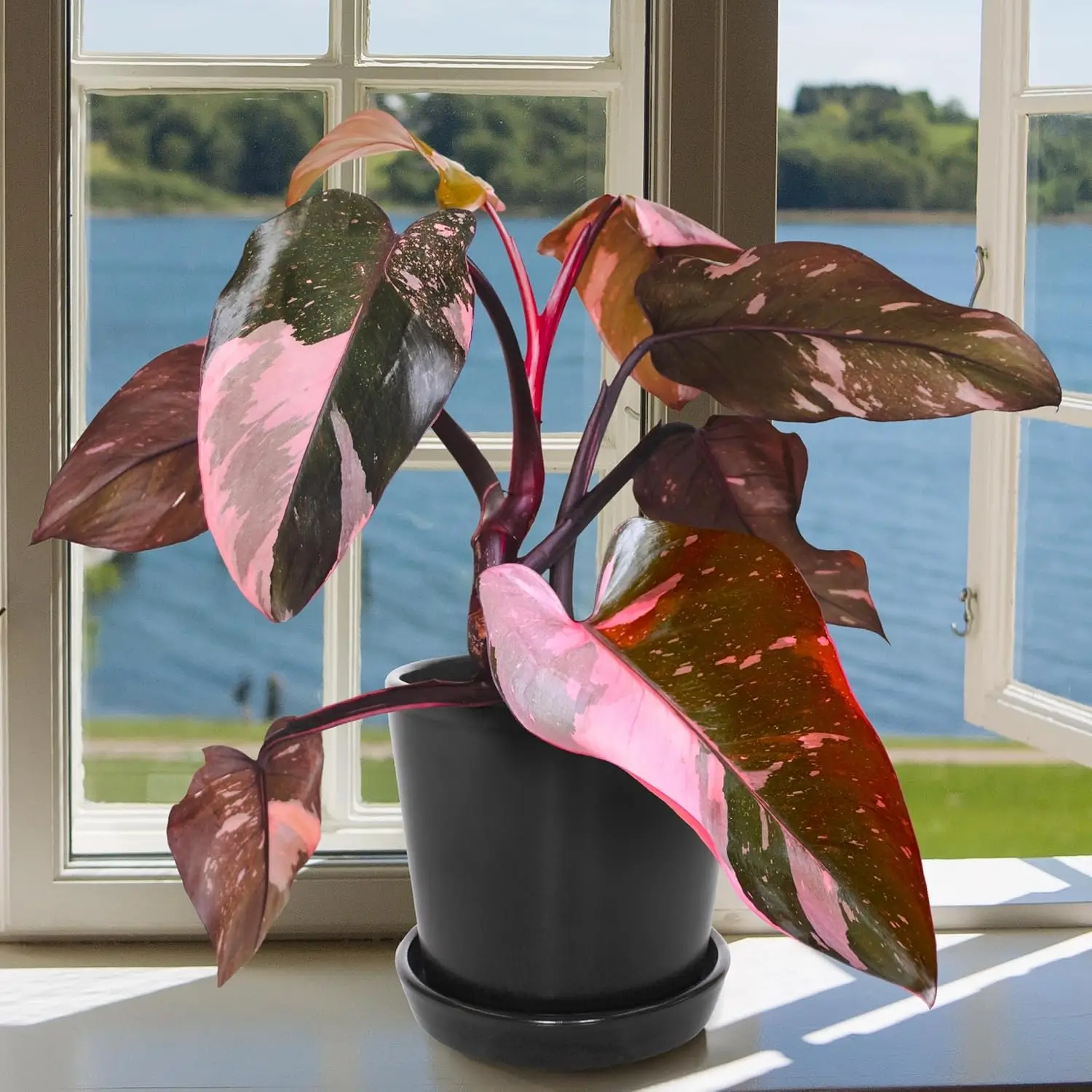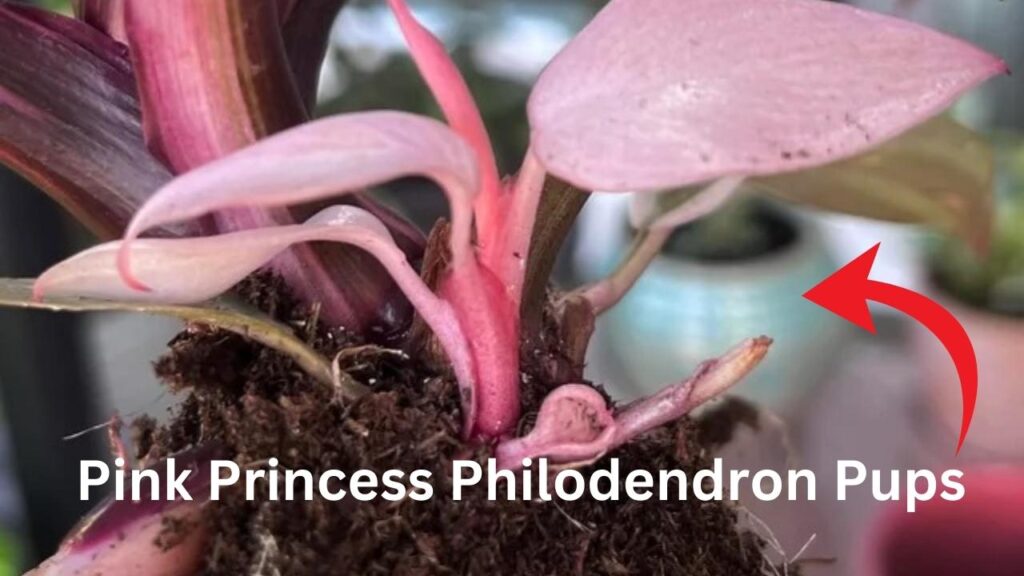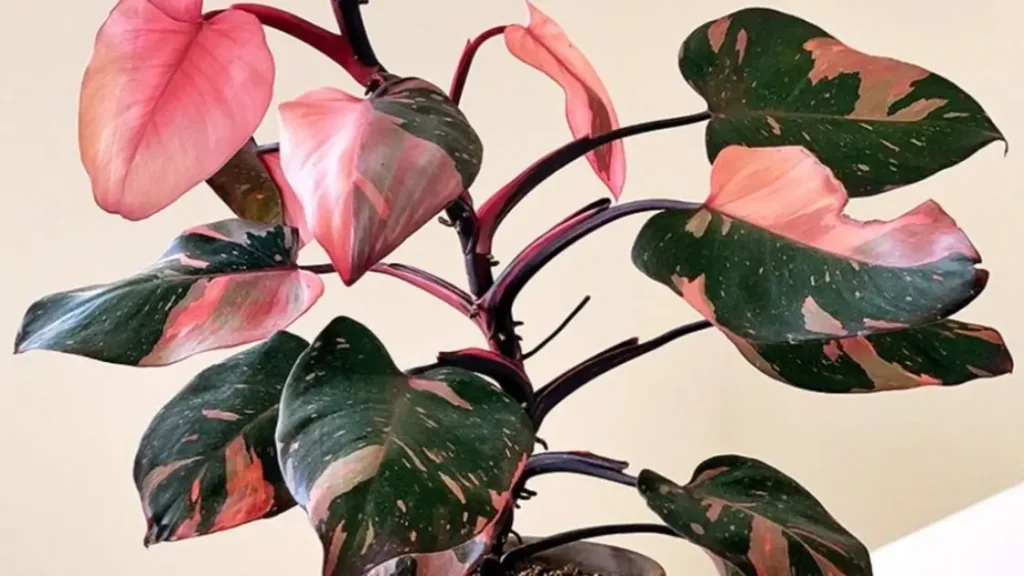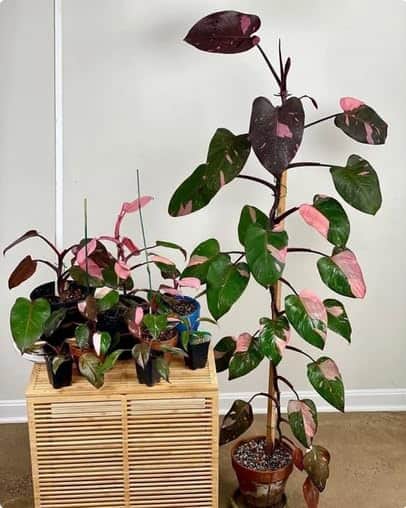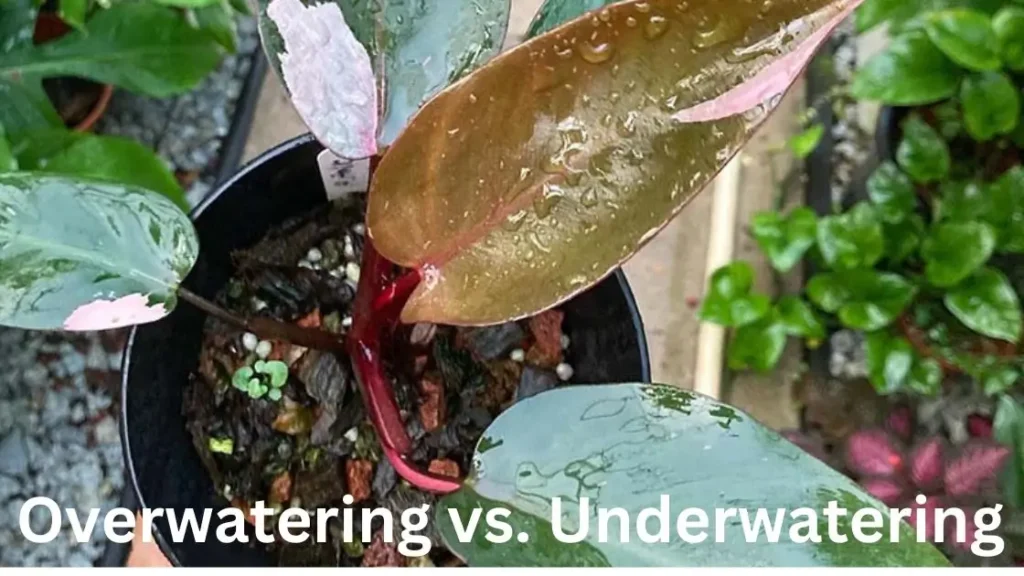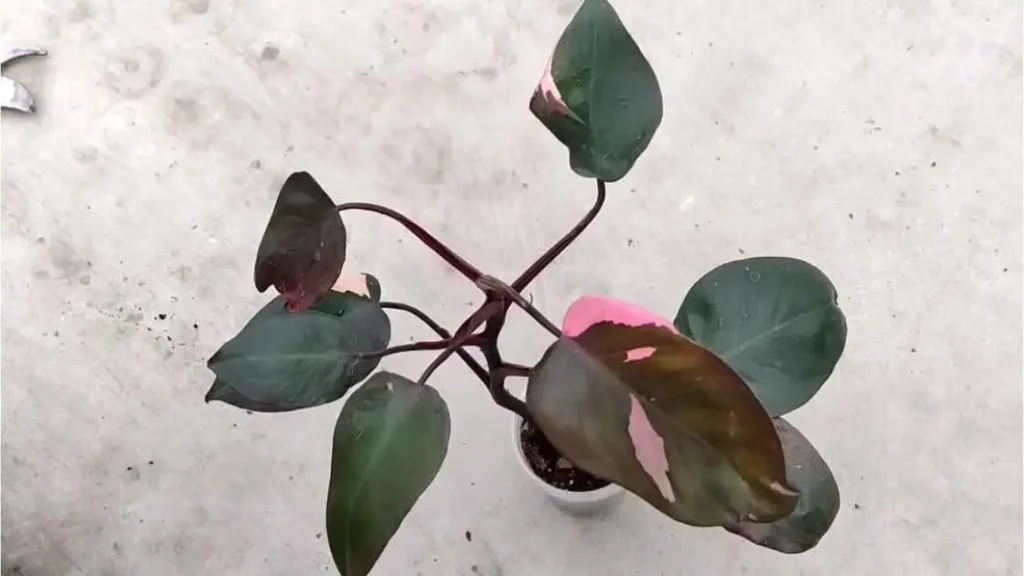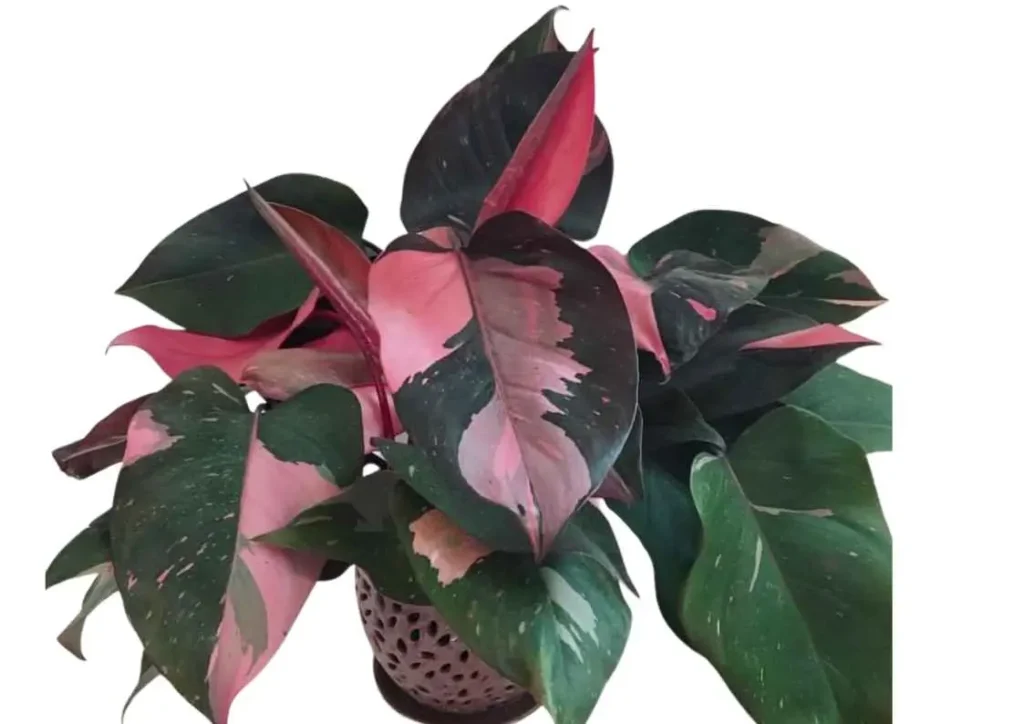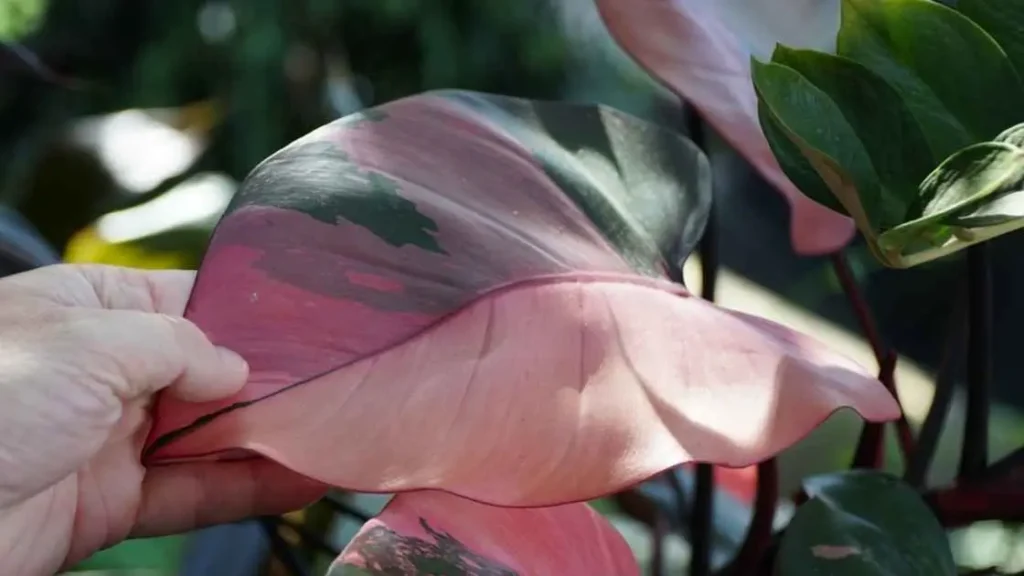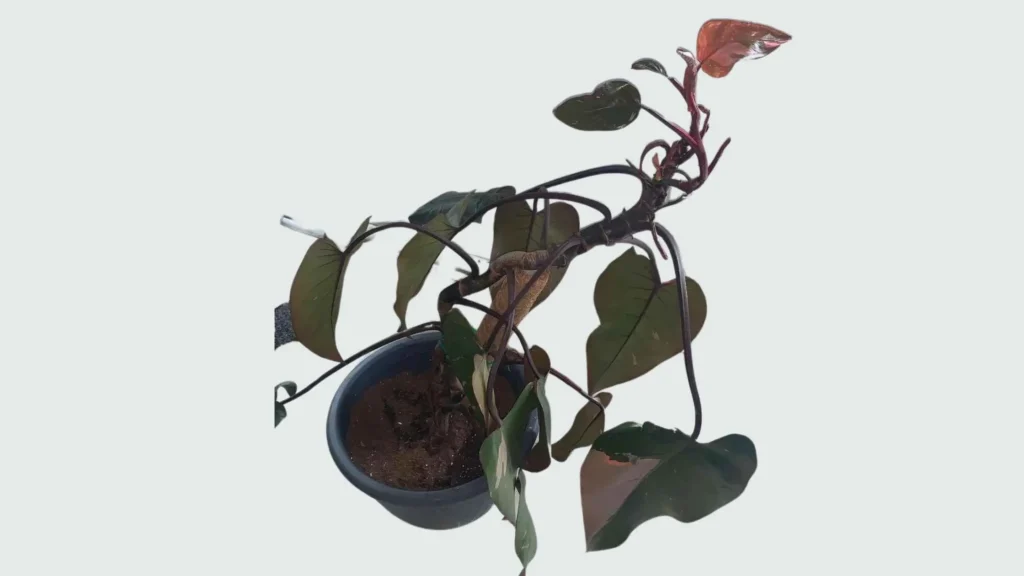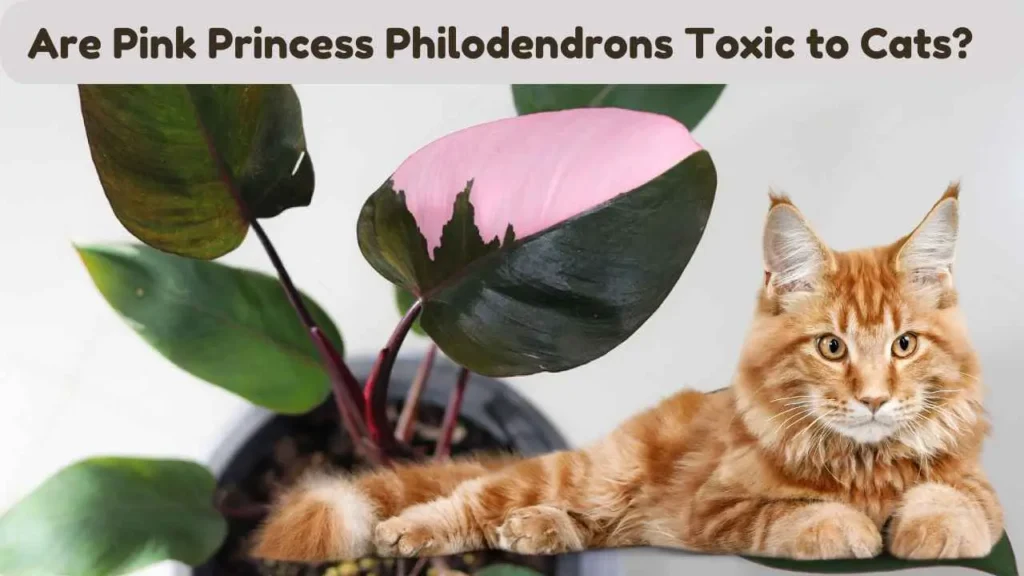Table of Contents
ToggleI remember the excitement of bringing home my first Pink Princess Philodendron. The mix of dark green and bright pink leaves made it feel like I had a piece of living art. But, as any plant lover knows, the joy can quickly turn into worry when those beautiful leaves start to show problems. Over time, I’ve dealt with many issues, like yellowing leaves and lost color, and I’ve learned some tips to keep my plant healthy.
In this guide, I’ll help you with common problems you might face with your Pink Princess Philodendron. Whether your leaves are turning yellow or pests are causing trouble, I’ll share easy tips based on my experience and expert advice.
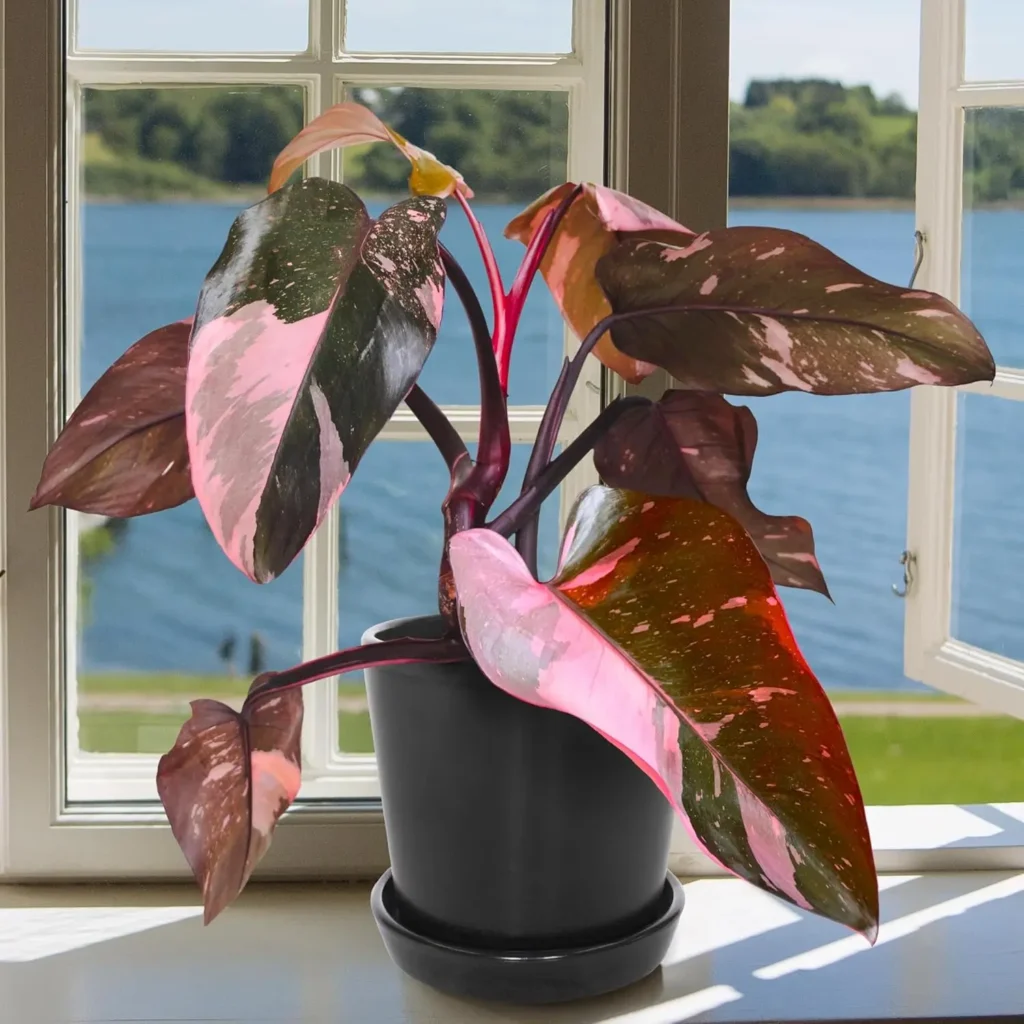
Yellowing Leaves in Pink Princess Philodendron
Causes and Fixes for Yellow Leaves on Pink Princess Philodendron
One of the first problems I noticed with my Pink Princess Philodendron was yellow leaves. If this has happened to you, you know how upsetting it can be. Yellow leaves usually mean something is wrong, and finding out what is causing it is the first step to fixing it.
Overwatering is often the main reason. When I first cared for my Pink Princess, I watered it too much, not knowing this plant likes to dry out a bit between waterings. The wet soil led to root rot, and the first sign was those dreaded yellow leaves.
Tip: Let the top inch of soil dry out before watering again. If you’re unsure, it’s better to be careful—this plant can handle a bit of dryness, but too much water can be deadly.
On the other hand, not watering enough can also cause yellow leaves. I’ve noticed that when I neglect my Pink Princess for too long, the lower leaves turn yellow as the plant saves moisture for new growth. If this happens, give your plant a good soak and water it more regularly.
Lack of nutrients can also cause yellow leaves. After a few months of owning my Pink Princess, I saw yellow leaves even though I was careful with watering. A little research and some trial and error taught me that these plants need a balanced fertilizer during the growing season. Now, I feed mine every four to six weeks with a diluted liquid fertilizer, and it has made a big difference in leaf health.
Preventing Loss of Pink Variegation
How to Maintain the Pink Variegation in Your Philodendron
One of the most upsetting problems with a Pink Princess Philodendron is losing its pink color. When I first saw the pink turning green, I was really sad. The pink color makes this plant special, so seeing it fade means something needs to change.
The main reason for losing the pink color is not enough light. These plants need bright, indirect light. Without it, the pink can disappear. I learned this when I placed my plant in a spot with too little light. The solution was simple—moving it closer to a window with filtered sunlight brought back the pink in a few weeks.
Tip: If your Pink Princess isn’t getting enough light, you might see that new leaves are more green than pink. To stop this, make sure your plant gets plenty of indirect sunlight. If natural light is a problem, you can use a grow light to help.
Another thing to avoid is stressing the plant by repotting or pruning too much. I noticed that after I repotted my Pink Princess, the pink color started to fade. Repotting is sometimes necessary, but it can stress the plant, so do it only when you really need to.
Keeping the right humidity is also important. I use a humidifier, especially during the dry winter months, to help keep the pink color. This simple step can make a big difference in how your plant looks.
Addressing Brown Spots and Leaf Burn
How to Treat Brown Spots and Burnt Leaves on Your Philodendron
Brown spots or burnt edges on the leaves are common and frustrating. When I first saw brown patches on my Pink Princess, I was worried it might be serious. Luckily, with some research, I figured out the cause and how to fix it.
One common reason for brown spots is too much direct sunlight. I made the mistake of placing my Pink Princess too close to a sunny window, thinking it needed lots of light. Instead, the leaves got burned, leaving ugly brown spots. If you see this, move your plant to a spot with bright, indirect light.
Low humidity is another cause. These tropical plants like a humid environment, and when the air is too dry, the leaves can get brown, crispy edges. I found that placing my Pink Princess on a pebble tray with water or using a humidifier helps keep the leaves healthy and free of brown spots.
Tip: Keep your watering consistent. Changes in soil moisture—either too dry or too wet—can stress the plant and cause brown spots. Keep a regular watering schedule, and make sure your plant’s pot drains well to avoid water pooling at the roots.
Managing Leggy Growth in Pink Princess Philodendron
Tips to Prevent and Manage Leggy Growth
I’ve noticed another problem called “leggy growth.” This is when the stems grow too long and have few leaves. It can make your Pink Princess look thin and scraggly. This usually means the plant isn’t getting enough light.
To fix this, move the plant to a brighter spot with indirect sunlight. I also turn the plant often so all sides get the same amount of light. This simple trick has helped stop one-sided or leggy growth.
Pruning is another good way to deal with leggy growth. At first, I was afraid to cut my Pink Princess, but pruning made it look much better. It encourages new growth and keeps the plant neat and compact.
Tip: If your plant is already leggy, don’t worry. You can cut the long stems and grow the cuttings in water or directly in soil. This not only helps shape the plant but also gives you more Pink Princess plants to enjoy or share with friends.
Dealing with Common Pests and Diseases
Common Pests and How to Treat Them
Even with good care, your Pink Princess Philodendron can still get pests and diseases. I’ve had problems with spider mites, aphids, and mealybugs. They can be stubborn, but they aren’t too hard to get rid of.
Spider mites are hard to see because they are small. They can multiply fast if not caught early. I usually find them when I see tiny webs on the underside of leaves. To remove them, I wipe the leaves with a damp cloth. Then, I treat them with neem oil. I also try to keep the humidity up because spider mites like dry air.
Aphids and mealybugs are easier to spot but can still harm your plant if left alone. I once had a bad mealybug problem that almost killed my plant. I fixed it by removing the bugs with a cotton swab dipped in rubbing alcohol. Then, I gave the plant a good rinse to wash away any left bugs. Now, I check my plants often to catch these problems early.
Tip: The best way to fight pests is to stop them from happening. Keep your plant’s area clean and check it often for pests. If you find them early, a quick wash or neem oil treatment can save your plant.
Diseases can also be a problem. Root rot is the most common one I’ve seen, and it often happens from too much water. If you think your plant has root rot, take it out of its pot. Cut away the bad roots and put it in new, well-draining soil. This can save your plant if you act fast. But it’s always better to avoid the problem by being careful with watering.
Troubleshooting Summary and Maintenance Tips
Quick Tips for Maintaining a Healthy Pink Princess Philodendron
Taking care of a Pink Princess Philodendron is not just about enjoying its beauty. It takes some work and attention. Here’s a quick guide to help you:
- Watering: Keep the soil slightly moist, but not too wet. Let the top inch of soil dry out before watering again.
- Lighting: Give your plant bright, indirect light. This keeps the pink color and stops the plant from growing too tall and thin.
- Humidity: Keep the air around your plant humid, especially in dry weather or winter.
- Pruning: Trim your plant often to help it grow fuller and keep its shape.
- Pest Control: Check your plant for pests often. Treat any problems right away to stop them from spreading.
Following these steps will help keep your Pink Princess Philodendron healthy and bright.
Conclusion
Taking care of a Pink Princess Philodendron can be very rewarding. It is great to see its pink and green leaves grow and thrive. Like any plant, it has its challenges. But with the right care, you can keep your Pink Princess looking beautiful all year.
I have learned a lot from my own experience with this plant. By sharing these tips, I hope you can avoid some of the problems I faced. Remember, each plant is different, so try different things to see what works best for yours.
Now you know how to solve common Pink Princess problems. You can handle any issue that comes up. Happy planting!
If you have any questions or have faced other problems with your Pink Princess, feel free to share in the comments below.
FAQs
Why are my Pink Princess Philodendron’s leaves turning yellow?
Yellow leaves usually mean there is a problem. Most often, it’s because of too much water. Make sure the soil drains well and let the top inch dry before watering again. If the leaves still turn yellow, check for root rot. Take the plant out of its pot and look at the roots. If the roots are black and soft, cut them off and repot the plant in new soil. Not enough water can also cause yellow leaves, so water it regularly.
How can I keep my Pink Princess Philodendron’s pink color?
Your plant may lose its pink color if it doesn’t get enough light. Move it to a spot with bright, indirect sunlight. If there isn’t enough natural light, use a grow light. It may take a few weeks to see the pink color return. Don’t move or repot the plant too much, as this can also cause the color to fade.
What should I do if my Pink Princess Philodendron has brown spots on its leaves?
Brown spots can come from too much direct sunlight, low humidity, or uneven watering. If the plant gets too much sun, move it to a place with indirect light. Increase humidity by using a humidifier or placing the plant on a pebble tray with water. Make sure you water it evenly, keeping the soil a bit moist but not too wet.
How can I stop my Pink Princess Philodendron from growing too tall and thin?
When a plant grows tall and thin, it often needs more light. Move it to a brighter spot with indirect light. Turn the plant often so it grows evenly. Pruning also helps make the plant fuller. You can use the cuttings to grow new plants.
What are the best ways to deal with pests on my Pink Princess Philodendron?
Check your plant often for pests like spider mites, aphids, and mealybugs. If you see any, wipe the leaves with a damp cloth to remove them. For tough infestations, use neem oil or insecticidal soap. Keep the plant’s area clean and humid to help keep pests away.
Related
Discover more from Pink Philodendron
Subscribe to get the latest posts sent to your email.

